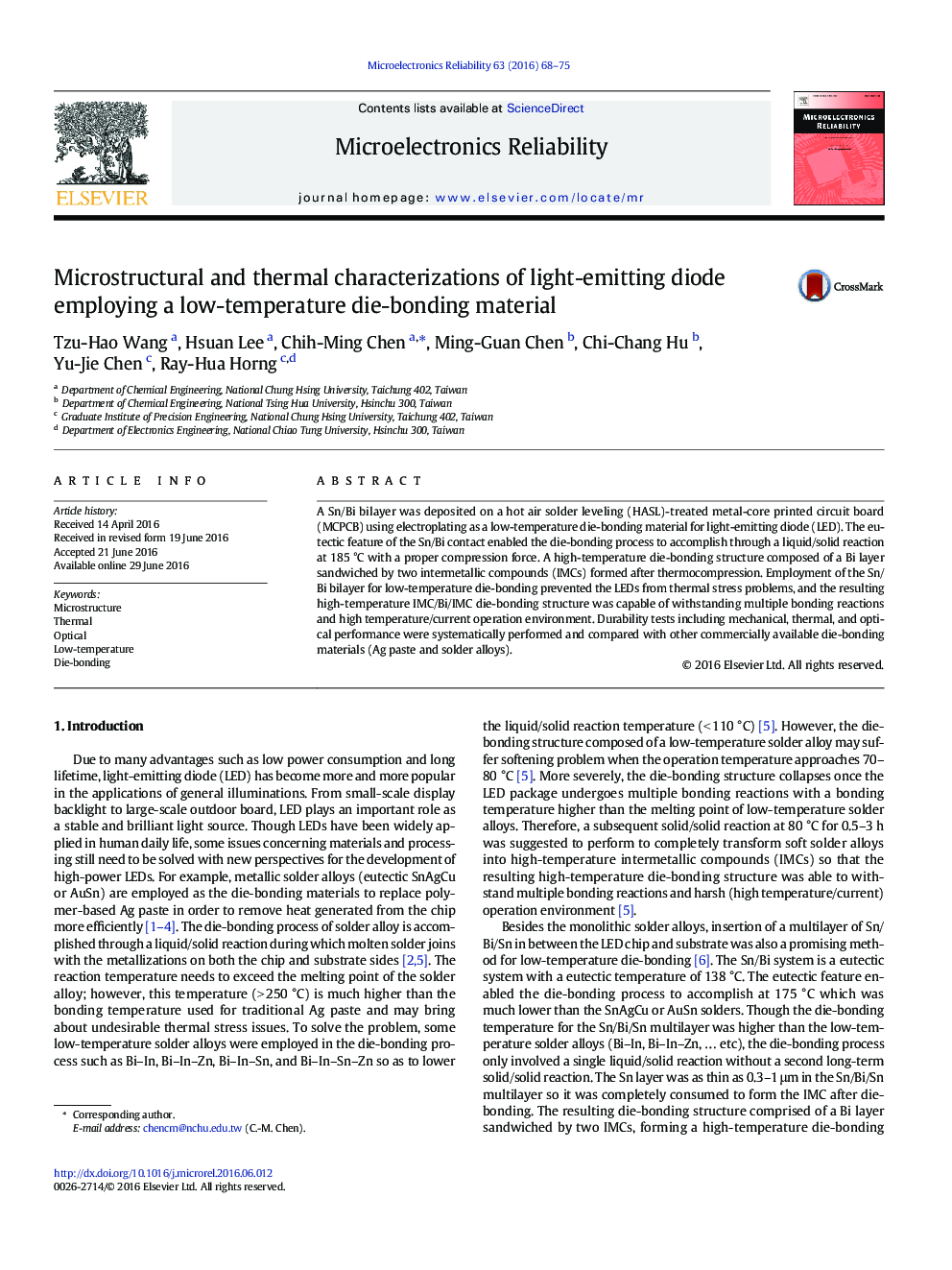| Article ID | Journal | Published Year | Pages | File Type |
|---|---|---|---|---|
| 548829 | Microelectronics Reliability | 2016 | 8 Pages |
•A high-temperature die-bonding structure was fabricated by a low-temperature process.•Low-temperature bonding process was assisted by a eutectic reaction.•Die-bonding structure shows good mechanical, thermal, and luminous property for LED.
A Sn/Bi bilayer was deposited on a hot air solder leveling (HASL)-treated metal-core printed circuit board (MCPCB) using electroplating as a low-temperature die-bonding material for light-emitting diode (LED). The eutectic feature of the Sn/Bi contact enabled the die-bonding process to accomplish through a liquid/solid reaction at 185 °C with a proper compression force. A high-temperature die-bonding structure composed of a Bi layer sandwiched by two intermetallic compounds (IMCs) formed after thermocompression. Employment of the Sn/Bi bilayer for low-temperature die-bonding prevented the LEDs from thermal stress problems, and the resulting high-temperature IMC/Bi/IMC die-bonding structure was capable of withstanding multiple bonding reactions and high temperature/current operation environment. Durability tests including mechanical, thermal, and optical performance were systematically performed and compared with other commercially available die-bonding materials (Ag paste and solder alloys).
